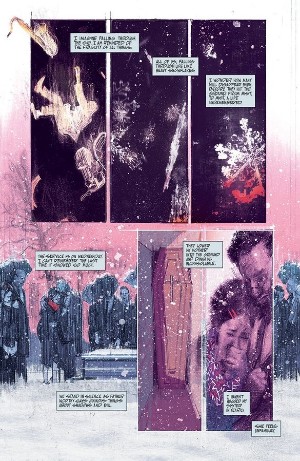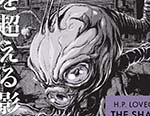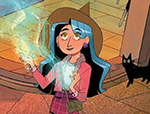 Erik Dieter always felt on the outside of things. He could never get close to his mother Alana, and when he returns home for her funeral in Blue in Green, he finds he feels nothing, “no grief or loss. Or sadness”. Erik wonders if this disconnection “is only a reflection of my shallow, unmemorable life. Already a quantity of nothingness”. For Erik also feels at the edge of his jazz musician aspirations, grasping at the wisps of intangible excellence, “a spectre waiting” to gain substance. Blue in Green sees Erik haunted by both his family past and the potential for success, with a solution crystallising into the corporeal form of a enticing, demonic, saxophone. Legend says Robert Johnson sold his soul to the devil to play guitar, and a similar Faustian bargain appears within Blue in Green, an instrument that may liberate Erik from his foggy peripheral life, making him burn fast but brightly.
Erik Dieter always felt on the outside of things. He could never get close to his mother Alana, and when he returns home for her funeral in Blue in Green, he finds he feels nothing, “no grief or loss. Or sadness”. Erik wonders if this disconnection “is only a reflection of my shallow, unmemorable life. Already a quantity of nothingness”. For Erik also feels at the edge of his jazz musician aspirations, grasping at the wisps of intangible excellence, “a spectre waiting” to gain substance. Blue in Green sees Erik haunted by both his family past and the potential for success, with a solution crystallising into the corporeal form of a enticing, demonic, saxophone. Legend says Robert Johnson sold his soul to the devil to play guitar, and a similar Faustian bargain appears within Blue in Green, an instrument that may liberate Erik from his foggy peripheral life, making him burn fast but brightly.
These beats aren’t exactly unfamiliar, but the tale is captured with stunning experimental artwork from Anand RK. His surreal compositions are reminiscent of Bill Sienkiewicz and Dave McKean, and are well-suited to this arcane story. As Erik floats through his ethereal life, Anand RK depicts half-faded people and painterly layouts, evoking the hazy spirit of jazz and the eldritch horror beneath Blue in Green. Pencilled sketches and blue-prints erratically poke throughout, creating a comic with enough structure to be legible but still effectively abstract. Such effectiveness is assisted by the shocking and stylish colours of John Pearson, which leap off the page on an almost primal level. The artwork is a thorough and beguiling collaboration that contains a haunting, sometimes grotesque, beauty. Blue in Green is worth reading just to see what visages will appear next.
Indeed, Blue in Green might be most impressive when it disassociates from the narrative completely, improvising off the mood and emotions that Erik provides. Ram V’s writing is not bad, actually his prose is sumptuous and lovely, with Erik’s narration eloquently guiding us through his thoughts and actions, such as how when playing the sax “the music comes forth like a rancorous beast, full of yearning and violent intent”. The issue is that such monologues can drone on a bit, distracting and overexplaining what is otherwise a far more sensual comic. The same is true with the plotting, which is both too structured to be a true tone-poem but also too languid to be a proper mystery-thriller. Blue in Green works best when riffing into unexpected tangents, but most of the time it sticks to conventions a little too neatly. It makes Erik’s Faustian Pact feel underbaked, without going as deep as the art should allow.
However, these critiques ultimately fade away before the unique and exemplary attributes of Blue in Green. Again, Ram V writes well, and provides a solid baseline for the artwork to spiral off from. Blue in Green provides an engrossing read about the sacrifices required for ‘greatness’, even if it’s a common tune. The craft and care infused into this comic is evident from all corners, from the deep jazz preferences Ram V adds to the crazed inventive artwork. Overall, Blue in Green might be a song you’ve heard before, but it’s played with incredible fervour and outstanding flair.
Ram V (W), Anand RK (A), John Pearson (C), Aditya Bidikar (L), Tom Muller (D), Ryan Brewer (Production Artist) • Image Comics, $17.99
Review by Bruno Savill de Jong

















